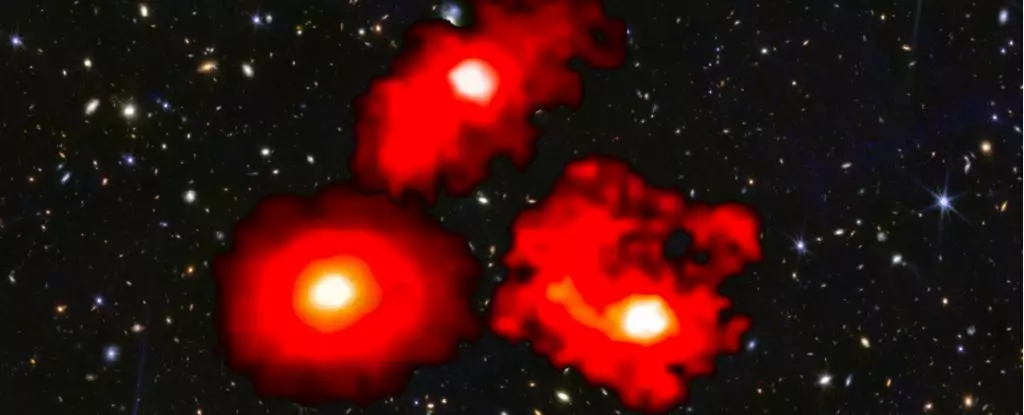Astronomical observations have always pushed the boundaries of our understanding of the cosmos, but recent findings have introduced a significant twist to our comprehension of galaxy formation. Long considered a theoretical framework, the idea of ‘red monsters’—massive galaxies nearly the size of the Milky Way existing shortly after the Big Bang—has emerged from discoveries made using the James Webb Space Telescope (JWST). These discoveries challenge everything astronomers thought they understood about the timeline of cosmic evolution, suggesting that we may have miscalculated the rates at which galaxies can form in the early Universe.
The period known as the Cosmic Dawn, which encapsulates the first billion years post-Big Bang, remains one of the least understood epochs in the Universe’s history. Until now, theories of galaxy formation have suggested that galaxies require substantial time to gather the necessary materials for creation, primarily through the gravitational clumping of dark matter and baryonic matter. With the arrival of the JWST, we are beginning to peel back the layers of this enigmatic period, capturing evidence we previously lacked. The infrared capabilities of the JWST allow it to detect celestial bodies at extraordinary distances, providing a clearer view of the newborn Universe and the formation of its earliest structures.
The emergence of these massive galaxies shortly after the Big Bang raises crucial questions about established models of cosmic evolution. By analyzing the formation processes, scientists have generally believed that such rapid assembly of massive galaxies was implausible due to the assumed slow rate of star formation during this early era. However, as astronomer Ivo Labbé poignantly highlights, the presence of these ‘impossibly’ large galaxies feels akin to observing a toddler weighing a hundred kilograms. This extraordinary discovery compels us to reconsider how we understand the formation environment of the early Universe.
An early explanation for these findings proposed that the observed mass and size of these galaxies were merely optical illusions, magnified by the brightness of their central supermassive black holes. The corresponding astrophysical activity could temporarily create an exaggerated perception of galaxy size. Yet, new research spearheaded by Mengyuan Xiao and his team has illuminated a different picture, validating that some of these galaxies genuinely exhibit characteristics of massive galaxies, aligning with their size and luminosity.
The observations forming the basis of these revelations were part of the JWST’s FRESCO (Fast-Track Redshift Emission Spectroscopy for Cosmic Origins) program. This international effort aimed to deliver precise measurements relating to the distances and masses of early galaxies. While most galaxies examined fit snugly within the boundaries of existing models, three ‘red monsters’ emerged, presenting a paradox. Their size and rapid star formation capabilities outstripped predictions, indicating a baryonic matter conversion rate two to three times greater than other known efficient star-forming galaxies in later cosmic epochs.
Such observations do not outright refute current cosmological theories or dark matter models but rather highlight a significant gap in our understanding of the processes governing star formation. The typical assumption is that strong feedback mechanisms, including the influence of supermassive black holes and explosive stellar deaths, would curtail the star formation rate effectively. This leads to the unsettling conclusion that there are still fundamental aspects of the early Universe we do not comprehensively understand.
Labbé reflects on the implications of these findings, indicating that they illuminate a crucial flaw in existing models regarding star formation rates. The notion that galaxies could have been producing stars with such remarkable efficiency during the Universe’s infancy suggests an alternate pathway for cosmic evolution. It compels astronomers and cosmologists to rethink their foundational beliefs surrounding galaxy genesis.
The discovery of these red monsters represents a seismic shift in our understanding of the early Universe, demanding further investigation and theoretical work. The JWST’s transformative capabilities have resurfaced long-standing questions about the cosmic timeline, establishing that, perhaps, the formation of massive galaxies is not only possible but perhaps common in the primordial cosmos. Our understanding of the early Universe is still evolving, and as our observational capabilities expand, so too will our knowledge and frameworks for interpreting the intricacies of galactic development across the vast expanse of space and time.


Leave a Reply